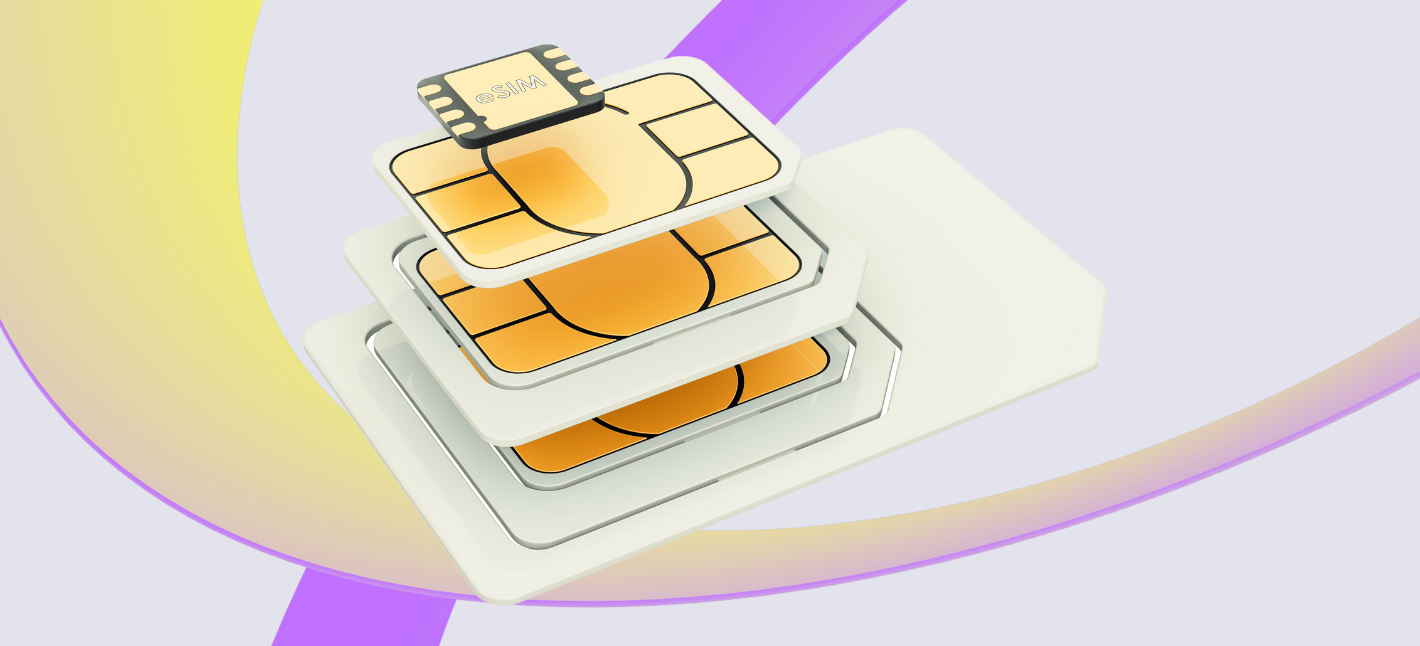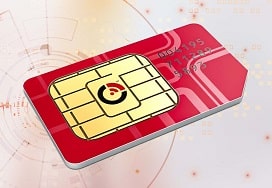Nb-IoT Connectivity Guide to Cellular IoT Options
Nb-IoT Connectivity Guide to Cellular IoT Options
Blog Article
What Is IoT Connectivity? Managing IoT Connectivity Effectively

The world has witnessed a major transformation in the method in which we interact with our living spaces. Smart properties, geared up with linked units, have risen dramatically in popularity, offering enhanced comfort, security, and energy efficiency. However, reaching seamless integration of all these gadgets heavily relies on efficient IoT connectivity solutions.
Various connectivity technologies facilitate communication between devices, ensuring that every element of the smart home works harmoniously. Choosing the most effective IoT connectivity solutions for smart properties is essential for creating an efficient and responsive environment. These options differ by method of range, energy consumption, and the kinds of devices they assist, permitting customers to tailor their smart house ecosystems to their specific wants.
Wi-Fi is doubtless considered one of the most widely used connectivity options, primarily because of its ubiquitous nature and high information transfer rates. Many smart house units are already designed to connect effortlessly to current Wi-Fi networks. This makes adding new gadgets relatively straightforward. Tablets, smartphones, and routers can typically support multiple devices concurrently, making it a convenient choice for smart home lovers.
IoT Connectivity Companies Quick Overview of IoT Connectivity Types
However, Wi-Fi isn't with out its challenges. The dependence on a stable web connection can often result in efficiency issues, especially with multiple devices making an attempt to speak at once. Furthermore, the range could be limited depending on the format of the home. Walls and different limitations can cause signal degradation, which might hinder the efficiency of devices situated removed from the router.

Zigbee is one other compelling choice for IoT connectivity in smart houses. This technology helps low-power gadgets, making it appropriate for battery-operated sensors and gadgets. Zigbee creates a mesh network, which implies every connected device acts as a relay, expanding the vary of connectivity inside the home. This is particularly helpful in larger areas the place traditional Wi-Fi might battle.
Managed IoT Connectivity Modern Solutions for IoT Connectivity
Z-Wave provides to the suite of options available for smart houses. It operates on a lower frequency than Wi-Fi, which means it can better penetrate partitions and keep away from interference from other electronic devices. Z-Wave is engineered specifically for residence automation, permitting varied units to work together seamlessly. The low power consumption additionally aids in battery longevity for gadgets that operate on this community.
For applications requiring low information rates however excessive reliability, LoRa (Long Range) provides a superb various. It is particularly useful for agricultural or environmental monitoring devices that solely require intermittent data transmission. LoRaWAN (Low Power Wide Area Network) permits these devices to speak over long distances, making it a perfect resolution for expansive properties or smart city functions.
Cellular connectivity serves as another strong resolution, mainly for units that require fixed internet access however will not be installed near established networks. This ensures that gadgets can send and receive knowledge over the web directly, eliminating reliance on residence Wi-Fi systems. While maybe more expensive, cellular connectivity provides the advantage of wide-reaching availability, significantly in rural or hard-to-reach areas.
Bluetooth is also a big participant within the realm of smart home connectivity, particularly for private devices like fitness trackers, smartwatches, and audio system. Its low energy necessities make it an attractive option for short-range communication. Bluetooth mesh networking enhances the protocol’s functionality, enabling devices to communicate effectively even when separated by some distance.
Connectivity Technologies In IoT Comparison Guide for IoT Connectivity
Thread is a comparatively newer protocol designed to make device connectivity less complicated. It additionally supports low-power devices in a mesh network configuration. What sets Thread aside is its IPv6-based communication, which permits extra easy integration with internet-based techniques and companies. This adaptability opens the door for future scalability as smart residence technologies proceed to evolve. Internet Connectivity Principles In IoT.
The integration of various connectivity protocols is important for compatibility among devices. Many corporations have acknowledged that a single answer might not meet all person needs, resulting in multi-protocol methods that can seamlessly swap between networks. Such flexibility allows homeowners to customise their smart environments and connect devices whatever the manufacturer.

As consumers increasingly emphasize sustainability, smart houses that facilitate energy-efficient residing have gained traction. IoT connectivity options contribute considerably to this trend. Devices can talk to optimize energy usage, adjusting heating, cooling, and lighting based mostly on real-time information.
When selecting the right IoT connectivity options for smart homes, customers should rigorously think about their specific requirements. Those prioritizing velocity may lean in path of Wi-Fi, whereas people needing to increase the vary of connectivity might choose Zigbee or Z-Wave. Budget, system compatibility, and the potential for future upgrades additionally play a major role in decision-making.
IoT Connectivity Service Providers Benefits and Use Cases of IoT Connectivity Technologies
Ultimately, the most effective IoT connectivity solutions for smart properties will improve not only automated convenience but also the total residing experience by incorporating click to read more advanced expertise into every day routines. These solutions empower homeowners to handle their environments better and stay more sustainably, simultaneously enjoying the advantages of state-of-the-art connectivity.
In conclusion, with the fast developments in know-how, the landscape of smart home connectivity continues to evolve. As extra units enter the market and more owners embrace automation, the importance of sturdy connectivity solutions becomes more and more apparent. Those who invest time in understanding and implementing these options will undoubtedly contribute to creating more clever, environment friendly, and pleasant living areas.
- Various connectivity protocols like Zigbee, Z-Wave, and Wi-Fi cater to completely different smart residence units, enhancing interoperability and device communication.
- Mesh networking capabilities allow devices to speak more efficiently, increasing coverage and reducing lifeless zones within bigger homes.
- Low-power wide-area networks (LPWAN) present energy-efficient solutions for battery-operated gadgets, promoting longer operational lifespans.
- The integration of edge computing ensures real-time information processing, decreasing latency and enhancing total system responsiveness.
- Cloud-based IoT platforms supply extensive information analytics, enabling users to optimize gadget usage and energy financial savings of their smart houses.
- Security options, corresponding to end-to-end encryption and regular firmware updates, are important for protecting smart house data from potential threats.
- Dual-band routers can help each 2.4 GHz and 5 GHz connections, providing flexibility and improved performance for numerous smart devices.
- User-friendly cellular functions enhance the management of smart residence units, enabling seamless interactivity and scheduling functionalities.
- Interoperability standards, corresponding to Matter, facilitate collaboration between different producers, selling seamless cross-device communication.
- 5G technology guarantees ultra-low latency and better bandwidth, potentially revolutionizing smart house experiences with faster knowledge switch charges.
What are the various varieties of IoT connectivity solutions for smart homes?undefinedThere are several IoT connectivity options, including Wi-Fi, Zigbee, Z-Wave, Cellular, and LoRa. Each provides completely different advantages when it comes to range, velocity, energy consumption, and scalability, allowing for tailored solutions based mostly on particular smart home wants.
How does Wi-Fi evaluate to Zigbee for smart residence devices?undefinedWi-Fi is faster and widely used for high-bandwidth purposes, whereas Zigbee is designed for low-power, low-bandwidth duties, making it ideal for devices that require lengthy battery life. Zigbee also helps mesh networking, enhancing vary and connectivity among gadgets.
Industrial IoT Connectivity Exploring the World of IoT Connectivity
What elements ought to I think about when selecting an IoT connectivity solution?undefinedConsider factors like range, power consumption, device compatibility, safety features, and the particular wants of your smart residence ecosystem. Assess what quantity of units you intend to attach and their energy necessities, making certain the chosen answer supports your setup.

Are there security dangers associated with IoT connectivity options for smart homes?undefinedYes, safety risks embody unauthorized access and knowledge breaches. It’s essential to choose options with strong encryption and common updates. Implementing strong passwords, firewalls, and maintaining firmware updated can significantly improve your smart home’s security - IoT Connectivity Issues.
Connectivity Management IoT Modern Solutions for IoT Connectivity
Can I combine a number of IoT connectivity solutions in my smart home?undefinedAbsolutely! Many smart home systems support integration throughout varied protocols, permitting units using totally different connectivity solutions to work together seamlessly. This flexibility enables users to optimize efficiency and compatibility.
What function does the cloud play in IoT connectivity for smart homes?undefinedThe cloud allows remote management, information storage, and advanced analytics for smart home gadgets. It facilitates communication between gadgets and consumer interfaces, allowing for real-time monitoring and control from wherever through web connections.
IoT Connectivity Sim Overview of IoT Connectivity
How can I ensure compatibility amongst totally different smart home devices?undefinedCheck for compatibility labels and be positive that units follow frequent standards like Zigbee or Z-Wave. Research ecosystems, similar to Google Home or Amazon Alexa, that support a extensive range of units, simplifying integration and control.
What is the future of IoT connectivity solutions for smart homes?undefinedThe future is More about the author leaning towards enhanced interoperability, improved security protocols, and the rise of 5G expertise. These advancements will provide faster speeds, larger device density, and lower latency, enhancing the overall smart house experience.
How can I troubleshoot connectivity points in my smart home?undefinedStart by checking the power sources and making certain devices are within vary of their connectivity hub. Restart routers and units as needed. Use both app diagnostics or producer help sources for specific troubleshooting steps tailor-made to the devices in query.
Report this page